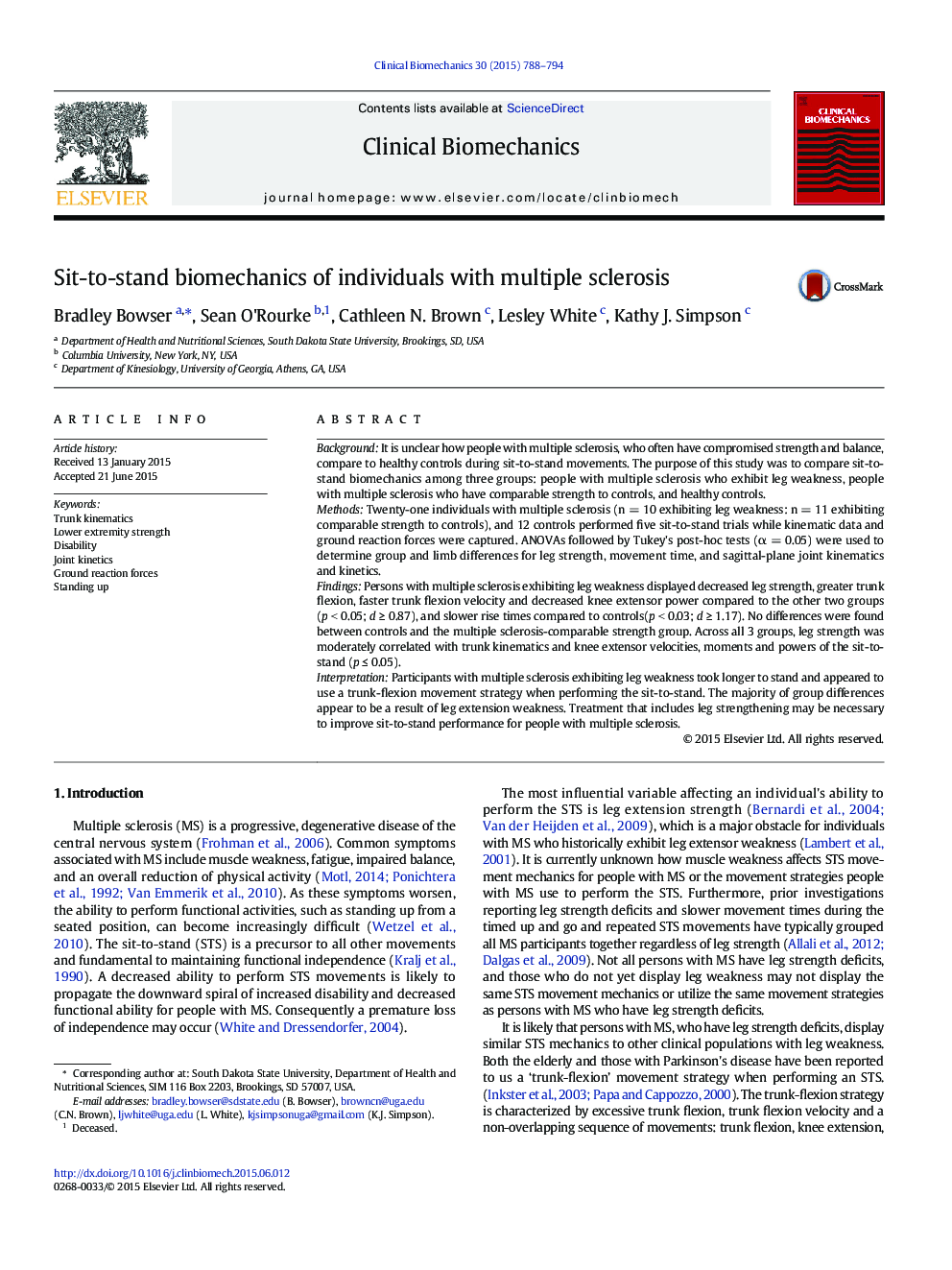| Article ID | Journal | Published Year | Pages | File Type |
|---|---|---|---|---|
| 6204679 | Clinical Biomechanics | 2015 | 7 Pages |
â¢We compare sit-to-stand mechanics among persons with and without multiple sclerosis.â¢Sit-to-stand mechanics in persons with multiple sclerosis are dependent on strength.â¢Persons with multiple sclerosis with leg weakness take longer to stand.â¢Persons with multiple sclerosis with leg weakness utilize a trunk-flexion strategy.â¢No group differences for max hip and knee extensor moments during sit-to-stand
BackgroundIt is unclear how people with multiple sclerosis, who often have compromised strength and balance, compare to healthy controls during sit-to-stand movements. The purpose of this study was to compare sit-to-stand biomechanics among three groups: people with multiple sclerosis who exhibit leg weakness, people with multiple sclerosis who have comparable strength to controls, and healthy controls.MethodsTwenty-one individuals with multiple sclerosis (n = 10 exhibiting leg weakness: n = 11 exhibiting comparable strength to controls), and 12 controls performed five sit-to-stand trials while kinematic data and ground reaction forces were captured. ANOVAs followed by Tukey's post-hoc tests (α = 0.05) were used to determine group and limb differences for leg strength, movement time, and sagittal-plane joint kinematics and kinetics.FindingsPersons with multiple sclerosis exhibiting leg weakness displayed decreased leg strength, greater trunk flexion, faster trunk flexion velocity and decreased knee extensor power compared to the other two groups (p < 0.05; d â¥Â 0.87), and slower rise times compared to controls(p < 0.03; d â¥Â 1.17). No differences were found between controls and the multiple sclerosis-comparable strength group. Across all 3 groups, leg strength was moderately correlated with trunk kinematics and knee extensor velocities, moments and powers of the sit-to-stand (p â¤Â 0.05).InterpretationParticipants with multiple sclerosis exhibiting leg weakness took longer to stand and appeared to use a trunk-flexion movement strategy when performing the sit-to-stand. The majority of group differences appear to be a result of leg extension weakness. Treatment that includes leg strengthening may be necessary to improve sit-to-stand performance for people with multiple sclerosis.
